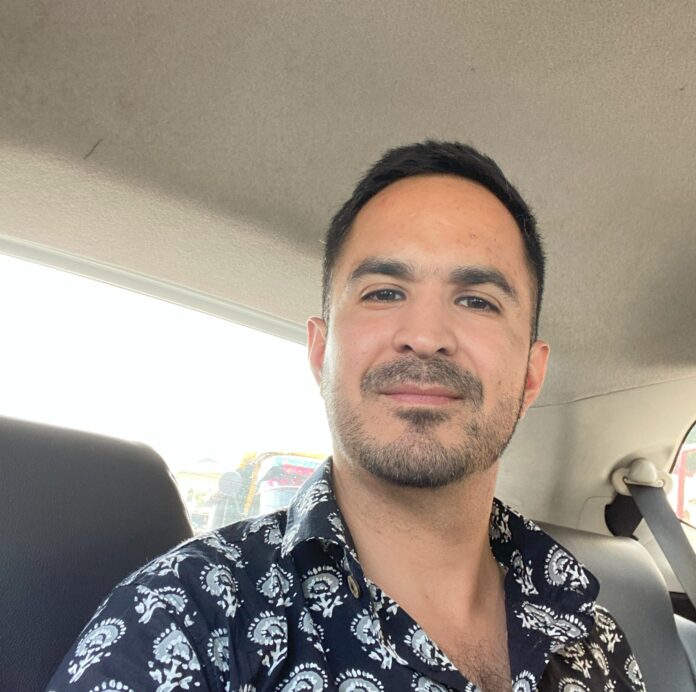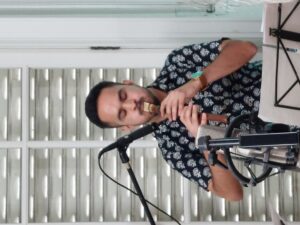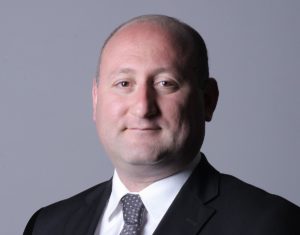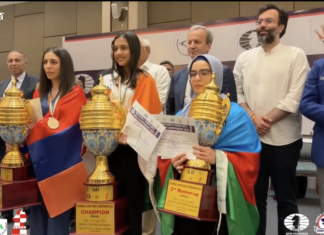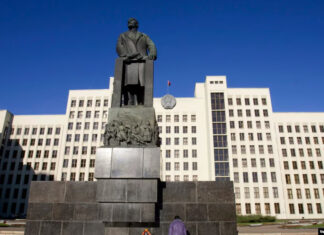YEREVAN — Love for Armenian music brought 33 years-old Chilean musician César Veas Valencia to Yerevan. From 2007 to 2013, he studied music, improvisation and electric guitar with teacher Jorge Díaz in Santiago, as well as performing on electric guitar and popular music at Projazz Professional Institute. Later, he studied also music and sound therapy at Ruta Alegre Holistic training center, Santiago. In addition, he started singing sacred music in Vox Celeste Choir of Santiago. In 2017, Veas founded UniSono Terapias, a company that imports into Chile musical instruments focused on music and sound therapy. He also offered sound therapy and music therapy services for companies, schools, kindergartens, and private practice.
César, when did you first encounter Armenian music?
It all started with Gurdjieff. I was deeply intrigued by his philosophy, as well as his music and dances. Wanting to learn more about him, I discovered he hailed from Gyumri, Armenia, sparking my interest in Armenian culture. I participated in the recording and release of the disc “Oriental Songs,” containing Gurdjieff’s music. My interest led me to explore Armenian music, especially Komitas, and when I first heard the sound of duduk, I was captivated instantly! I reached out to duduk player Gagik Gasparyan in Córdoba, Argentina, who helped me to find an instrument and started giving me lessons. For about three years, I traveled two or three times per year to train with Gagik. Then, I felt the urge to visit Armenia, which brings me here today for the second time. My first visit was a six-month journey last year, and it was a wonderful experience. When I arrived, I only knew one person — a duduk master who had provided instruments for my small store in Santiago. He greeted me at the airport and helped me find accommodation. Finding a teacher was my next task. While working in a café in Yerevan, I noticed a musician whom I admired, Arsen Petrosyan, one of my favorite duduk players. I struck up a conversation with him, and I was fortunate that he agreed to be my teacher. He is a great person.
Komitas’s music has always deeply touched my heart. I continue to explore more Armenian music; recently, I’ve been listening to the songs of Ashugh Jivani, who has become my favorite for now. I’ve been pleasantly surprised by the high level of music in Armenia, whether it’s classical, folk, or jazz! Another memorable experience was meeting a guy at a dance festival who happened to be a choir singer. After expressing my interest in joining a choir, he introduced me to his choir conductor, and that’s how I became a member of the Khazer choir. So now, playing the duduk and singing in the choir are my main musical activities in Armenia.
Additionally, I decided to join the Armenian Voluntary Corps to immerse myself more in Armenian life and connect with locals. Currently, I’m working with the Akna organization, led by Levon Eskenian, the leader of the Gurdjieff Ensemble. One of our purposes is to organize a tour of the Ensemble to Latin America and Spain. In addition to my involvement in music, I also teach Spanish at the European University. I was pleasantly surprised to discover that many Armenians have a great love for the Spanish language and culture – another wonderful experience here!
And how is your experience learning Armenian?



